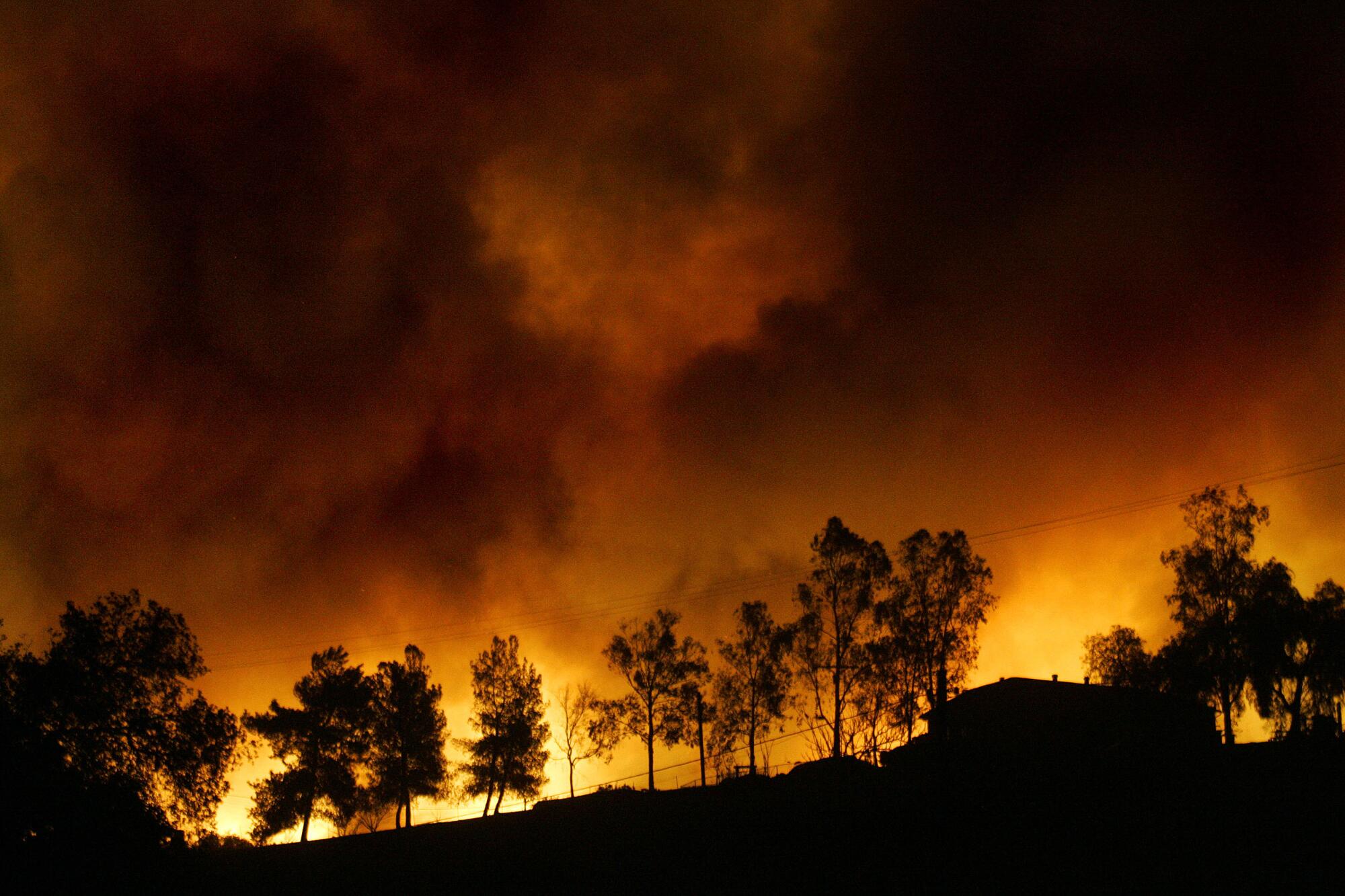
- Share via
SAN DIEGO — Fearing wildfire, Jack Dillender has been doing everything within his budget to harden his three-bedroom house, which is nestled between the windswept, boulder-strewn hillsides of Dulzura. The rural hamlet, within 10 miles of the Mexico border, is among several nearby communities along state Route 94 routinely blasted by flames and dangerously intrusive embers.
The 42-year-old, who lives with his fiancée and her two children, said he’s been slowly installing double-paned windows, as well as relentlessly chopping back vegetation on the 47-acre property.
The process has proven tremendously expensive and time consuming. However, he said, he’s better off than many of his neighbors.
“A lot of the people are lower income; the houses are older and the properties are large,” said Dillender, who works as a technician servicing fire alarms and sprinkler systems in office buildings.
Now, help could be on the way. California recently launched a novel $100-million pilot program in collaboration with the Federal Emergency Management Agency, or FEMA, to pay for home retrofits in high-fire areas.
San Diego County has been chosen by state officials to spearhead the new initiative — doling out up to $40,000 per home across 500 backcountry residences from Dulzura to Campo. Firefighting officials have only just started taking applications for the three-year endeavor, which aims to tackle everything from installing ember-resistant screens on home vents to replacing windows, siding and roofs.
County Fire Deputy Chief Dave Nissen, who has worked in the region’s bucolic eastern communities for 30 years, said he hopes that folks will take advantage of the free upgrades.
“We’re not here to push this down anybody’s throat, but at the same time, we think it’s a high-value program,” he said. “We just want to take the time to make sure people are making a well-informed decision, whether they want to be a part of this or not.”
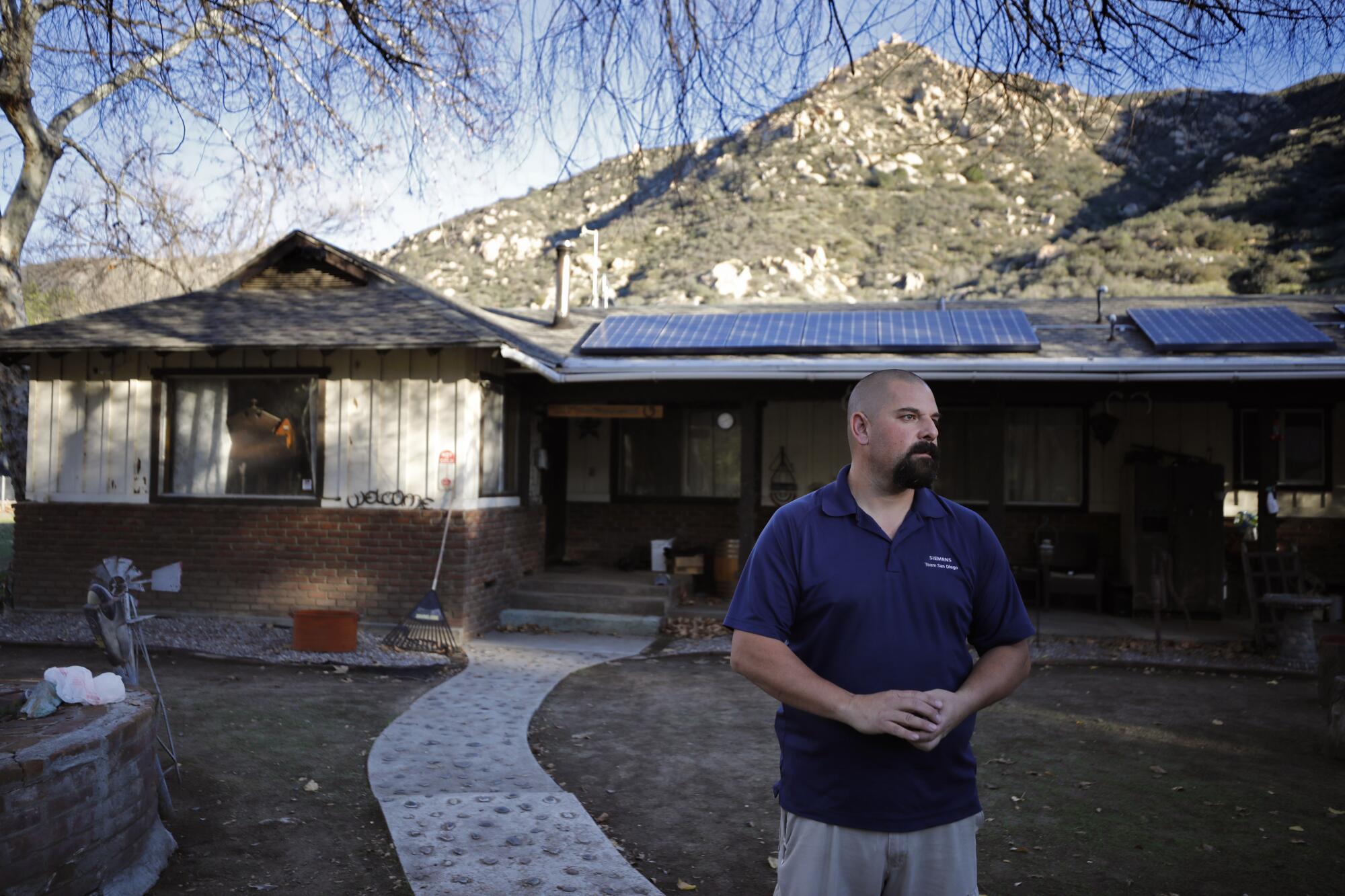
Ember storms
The financial-assistance program, mandated under Assembly Bill 38 in 2019, came in the wake of the devastating Camp fire, which laid waste to the town of Paradise a year earlier.
The blaze, which jumped from home to home, often leaving surrounding trees intact, showcased a disturbing trend long familiar to those living in Southern California. Suburban subdivisions and even entire towns that abut wildland areas can catch fire in ember storms that travel far ahead of a flame front.
In short, homes become the fuel — especially those structures built before California rolled out a series of fire-resistant building codes starting in the 1990s.
“Houses are accelerants, but if you do the work — defensible space, building codes — you can minimize the acceleration that a subdivision can generate when a wildfire comes screaming over the ridgeline,” said Char Miller, a professor of environmental analysis at Pomona College who has written extensively about wildfires.
Wildfire prevention in California has largely focused on using heavy equipment to thin densely packed, fire-starved forests, such as in the Sierra Nevada. Hundreds of millions of dollars are currently slated for such work under spending approved by Gov. Gavin Newsom as well as the $1-trillion federal infrastructure bill.
However, in recent years, a growing chorus of researchers and environmental advocates have pointed out that much of the state’s structure loss from uncontrolled conflagrations happens not in heavily forested areas, but in communities surrounded by brush and grasslands.
While chainsaws do little to tamp down the threat of wildfire in Southern California’s chaparral-covered hillsides, for example, hardening structures against ember storms can offer significant protection, according to experts.
A recent study from UC San Diego found that homes built after the state’s wildfire building codes went into effect were significantly less likely to be destroyed in a large blaze. By comparison, states without such construction requirements, such as Colorado and Oregon, have seen rates of destruction remain relatively unchanged for decades.
“I am surprised at how clear it is in the data,” said Judson Boomhower, co-author of the report and environmental economist at UC San Diego. “It’s not often in social science that the answer just falls out like it did here.”
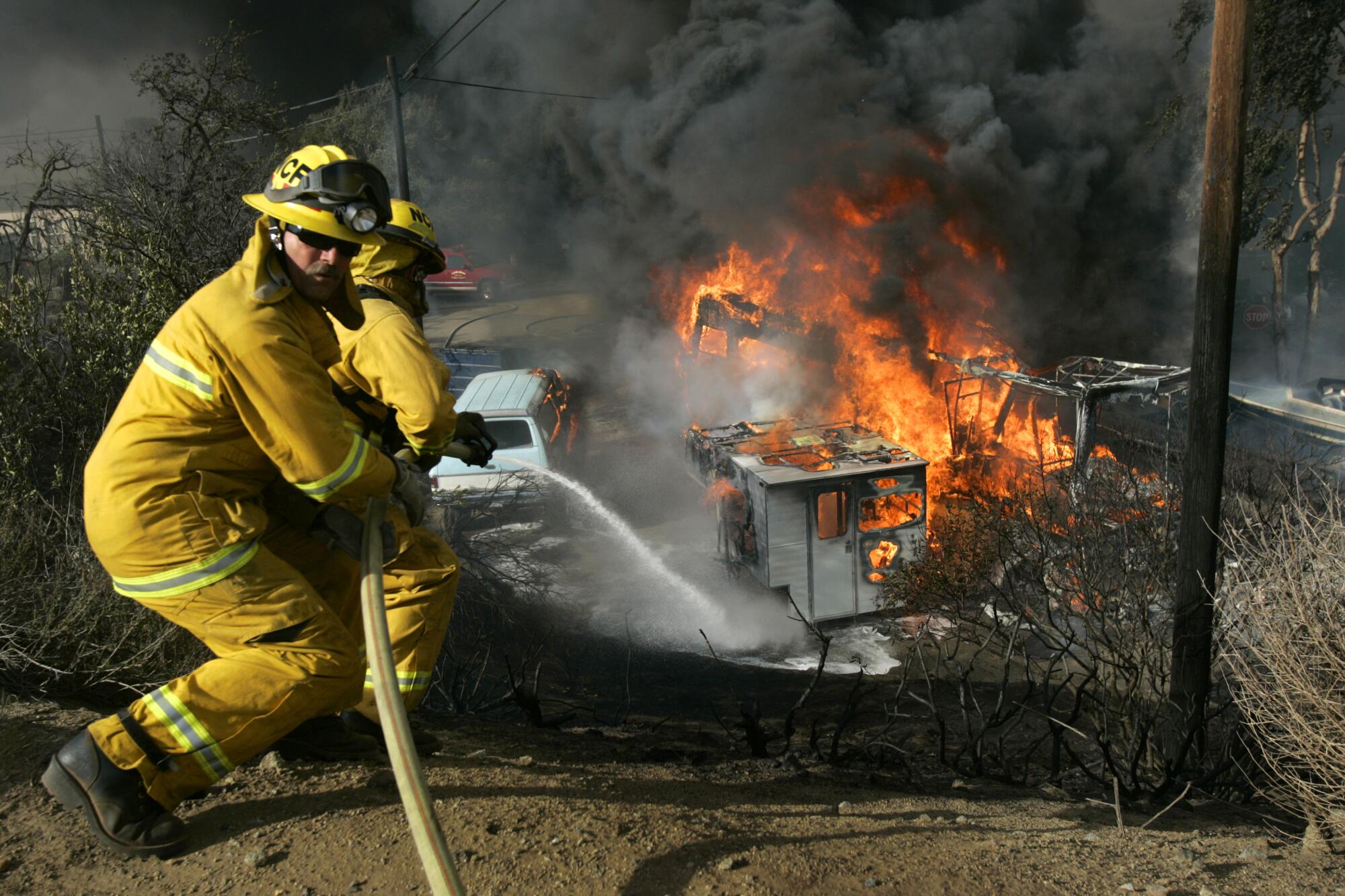
Fire-prone homes
Dillender moved to Dulzura about seven years ago, purchasing an older home that had survived the deadly 2007 Harris fire. A trailer park right down the road was devastated by the 90,440-acre blaze, which destroyed 548 structures and killed eight people.
The San Diego native believes strongly in the value of upgrading his home. He said nearby conflagrations regularly pepper the community with potentially dangerous ash and embers. While double-paned windows can keep flames and radiant heat from bursting into a home, sealing off eaves and vents reduce the likelihood that a barrage of firebrands will sneak in and explode the structure from the inside out.
“We’ve been doing the windows one at a time as we can afford it, and there’s like 20 in the house,” he said. “It’s rough.”
That’s why he volunteered to be California’s first participant in the new home-hardening pilot program. Beyond his drafty single-pane windows, woodpeckers have drilled sizable holes into an exterior wall, and the structure’s gapping ventilation system needs a major overhaul.
“It’s really going to help the people,” said Dillender, who now leads the Dulzura Fire Safe Council, a community-led group that educates residents and organizes defensible-space projects. “A lot of these people inherited these houses and don’t have the resources to take care of them.”
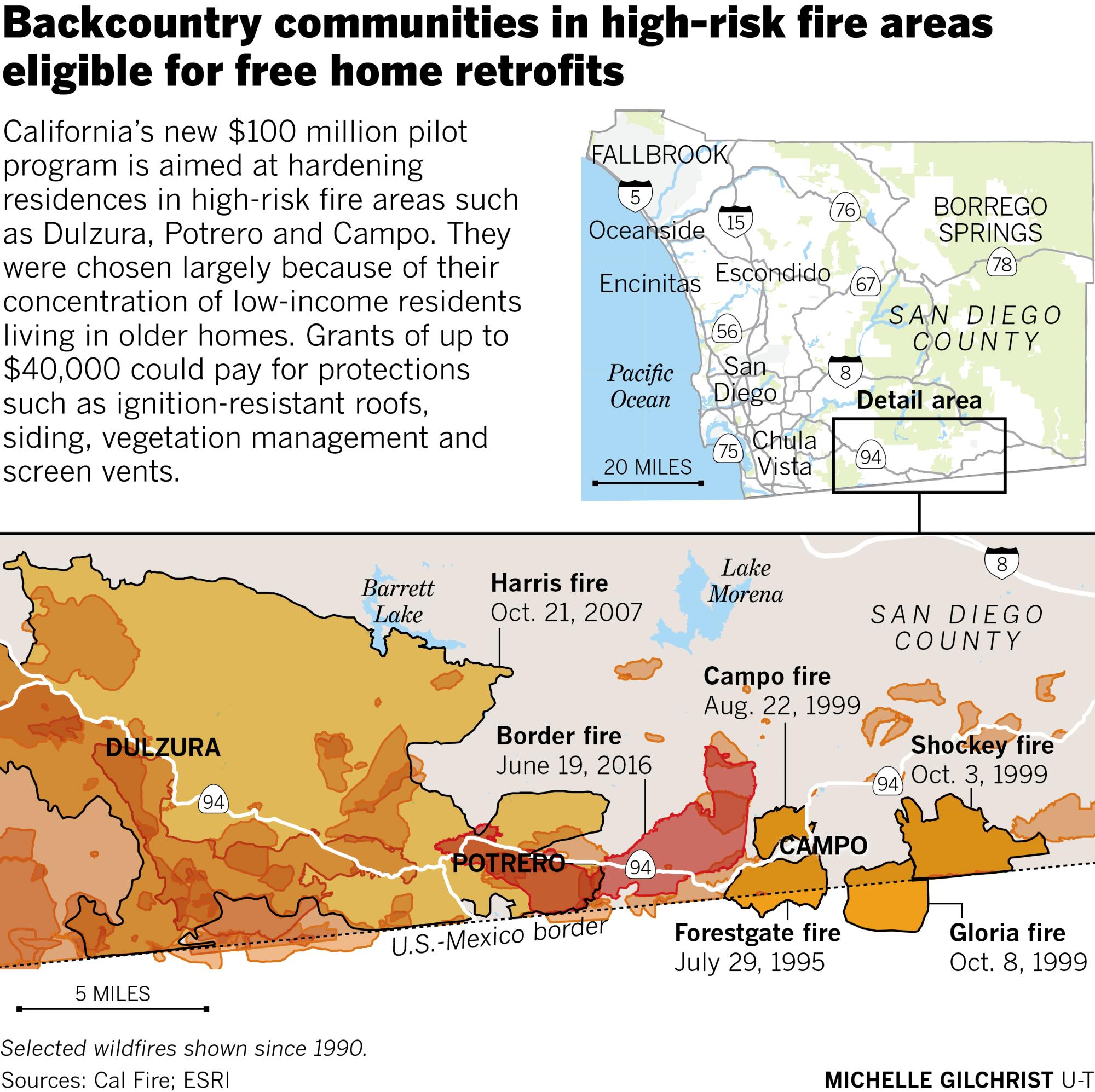
The California Department of Forestry and Fire Protection, or Cal Fire, chose the communities of Dulzura, Potrero and Campo based largely on their concentration of low-income residents living in older, fire-prone homes. The state is also starting to roll out the pilot in Shasta County. Residents with higher incomes can still qualify for the retrofits as long as they pay for a percentage of the work on a sliding scale.
The idea is to simultaneously revamp entire communities or subdivisions. Researchers have found that if even just one home catches fire, it can put the whole neighborhood at risk. Cal Fire has started taking applications at wildfiremititgation.caloes.ca.gov.
“Some people are onboard with free money,” said Cal Fire Assistant Deputy Director Daniel Berlant. “Others don’t want the government’s help. That’s going to be a challenge we’re working to overcome.”
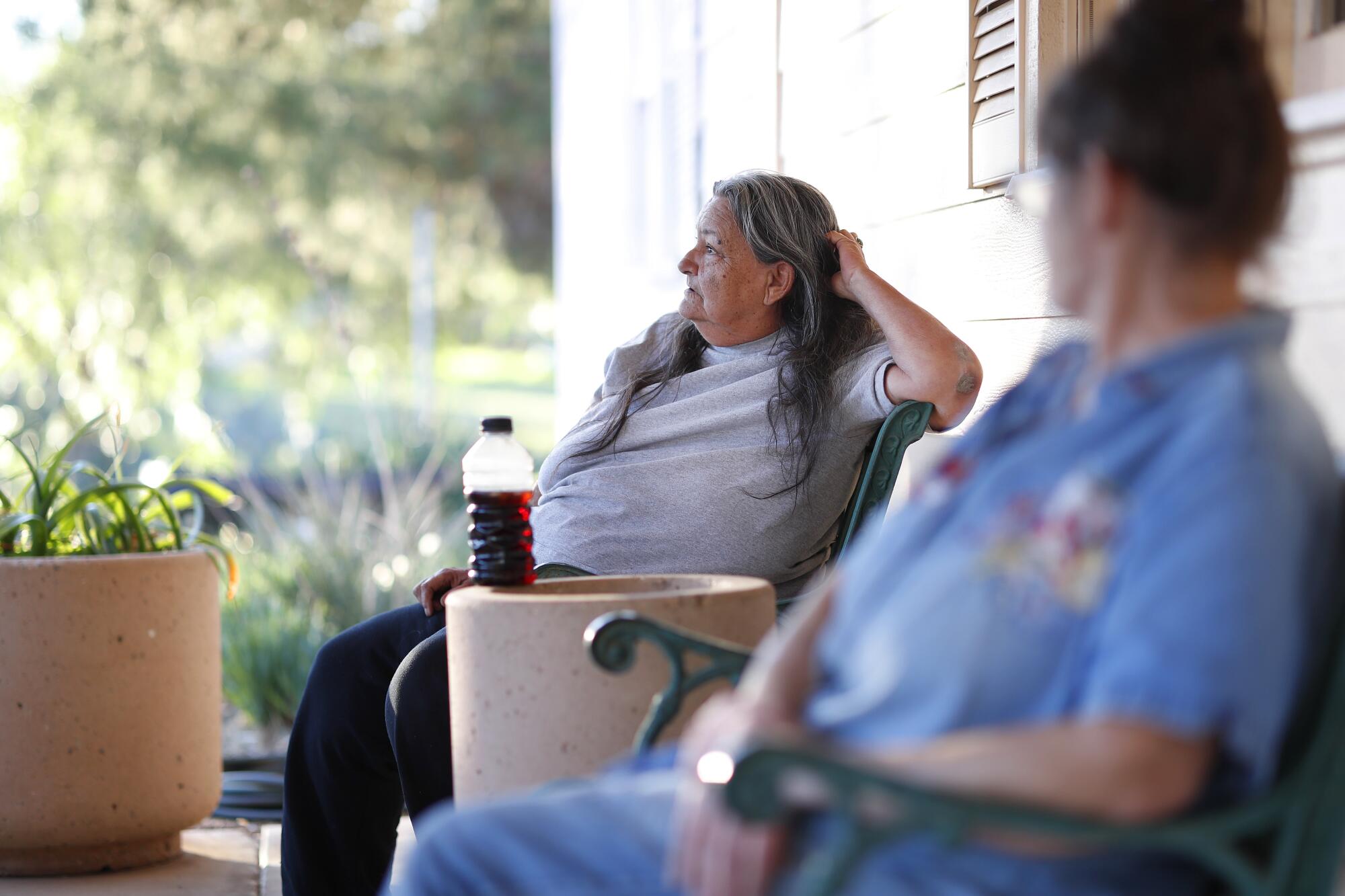
One of those skeptical residents is Susan Gallegos, 65, who moved to Dulzura in the mid-1990s. The Harris fire wiped out three of her neighbors’ homes, but somehow her 500-square-foot, single-story ranch house was spared.
“I don’t have the money for it,” she said of upgrading her home, which lacks a concrete foundation. “Everything’s wood.”
Still, Gallegos said she’s concerned the program could hike her property taxes or trigger other code-compliance issues.
“My fixed income is very low,” she said. “I figure if my house burns down, I probably just sell the land and move on.”
Tax questions
Firefighting officials have said the process will not require the county to reassess properties. However, it’s possible that awarded funds could be taxed as income, an issue currently under discussion in the state Legislature.
Toni Luecht, 74, said she’ll likely participate in the retrofit program. She and her husband lost a previous home in the Harris fire.
“We have the defensible space that’s required, but the vents in the attic are not good,” said the Dulzura resident. “It’s scary because we’ve been through this before.”
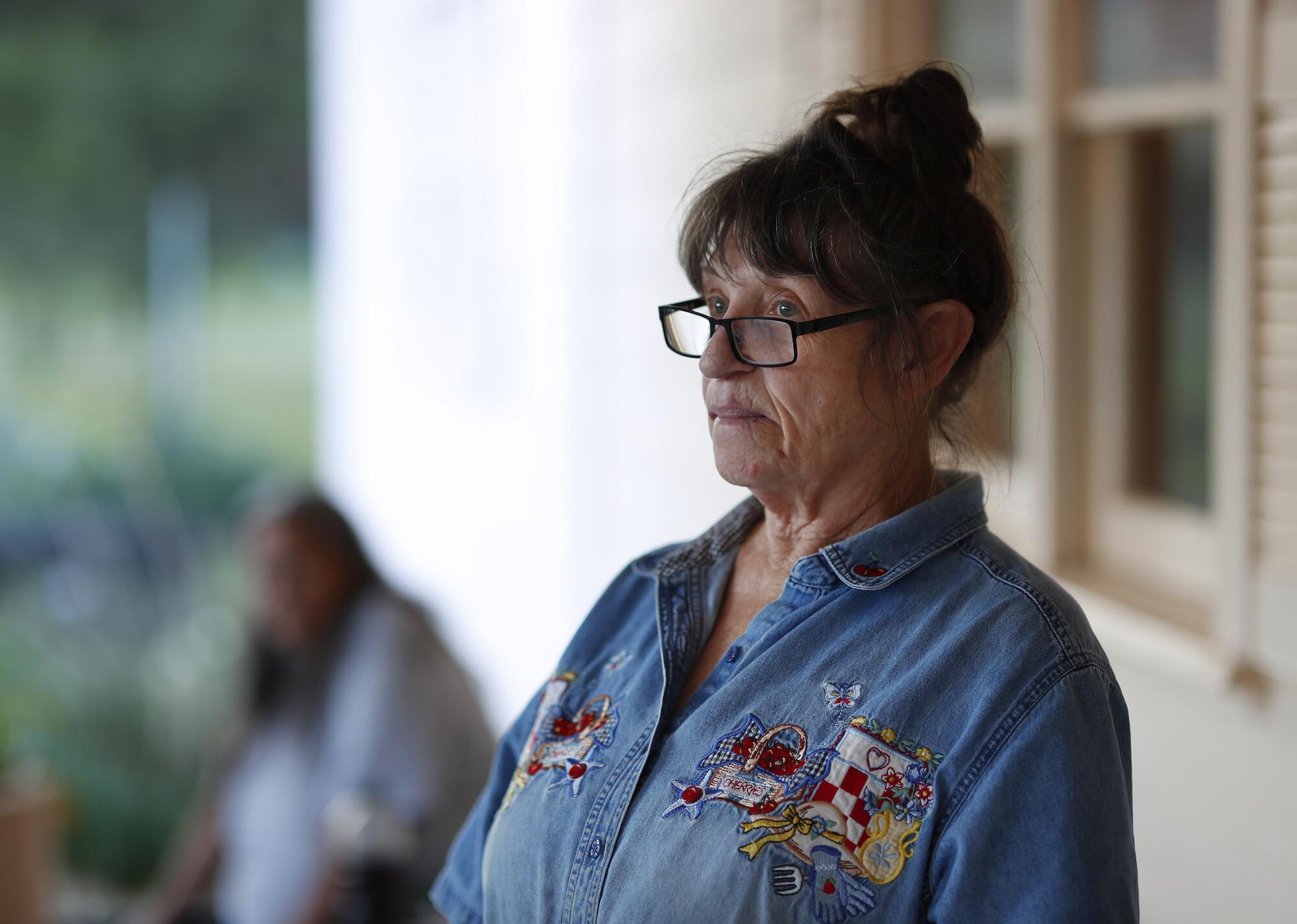
Such upgrades are all the more pressing because it can be hard to evacuate these communities. State Route 94 is the only way in or out and notifying residents of an oncoming wildfire can be tricky. Heavy smoke often obscures satellite internet connections, while fire can damage cell phone towers in an area with already spotty service.
During the hot, windy summer months, Dillender said he monitors local firefighting activity using a scanner. He said the ham radio crackles over outdoor speakers, while he and his 10 hungry goats tend to the never-ending chore of maintaining the large property.
“It sounds crazy, but I have Cal Fire playing all day so I can hear the dispatch as it happens,” he said. “I would get out immediately at the first sign of fire.”
Heightening concerns, he said, people illegally crossing the border into the United States regularly make their way through his property. The U.S. Border Patrol has a strong presence in the area, operating a checkpoint along the highway and patrolling communities in their signature green and white SUVs.
“They make little fires up in those hills, day and night,” he said of those crossing the border illegally, pointing to the steep, rocky terrain southeast of his property. “All night long, the dogs bark.”
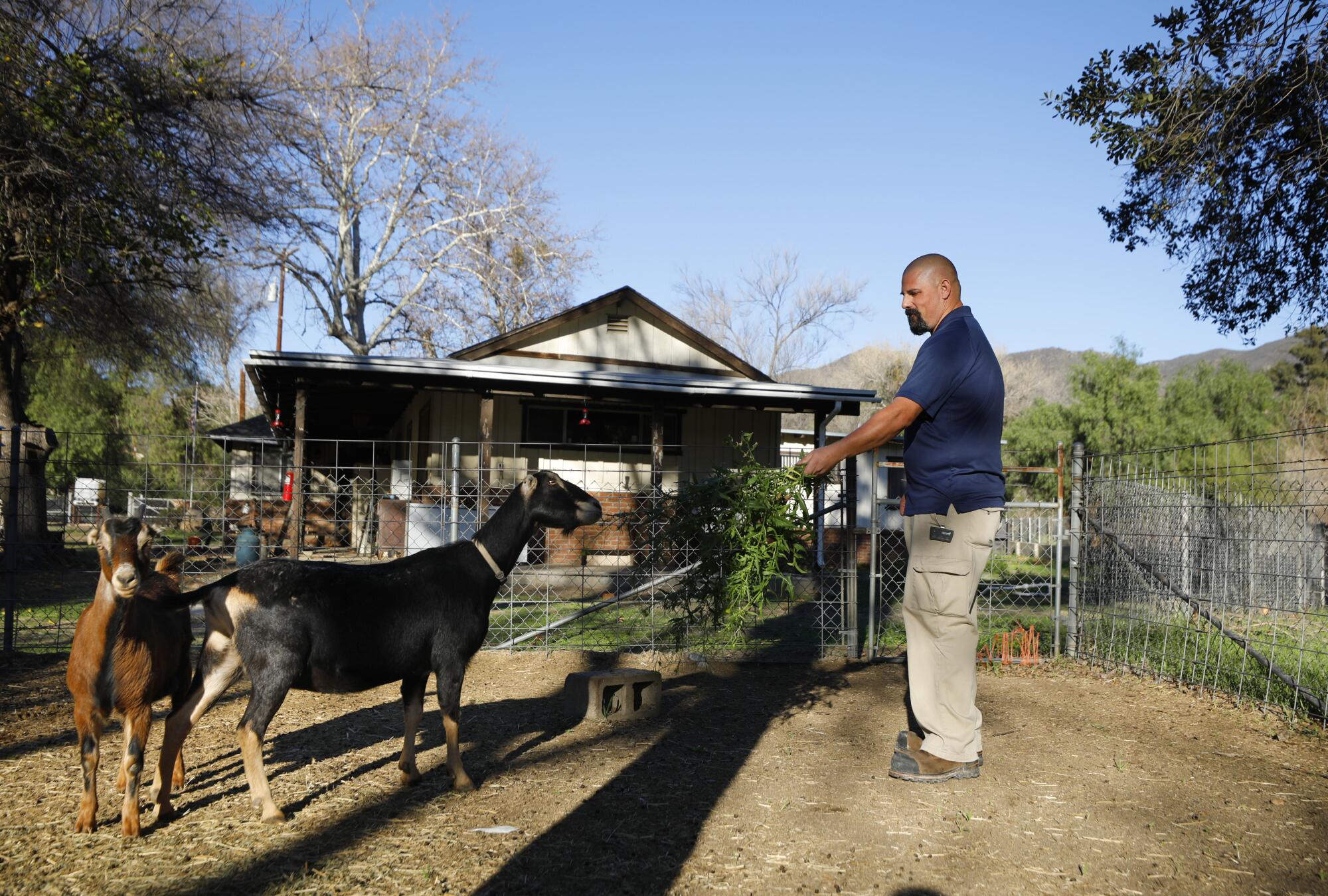
Tougher building codes
The most recent evidence that California’s extensive building codes prevent significant home loss during wildfire came from a UC San Diego study released in December through the National Bureau of Economic Research.
The research sought to assess the effects of rules put in place following the 1991 Oakland firestorm, which destroyed 2,900 structures and killed 25 people. As a result, lawmakers passed series of regulations requiring that construction in high-fire areas include ignition-resistant roofing.
The state bolstered its wildfire building codes again in 2008, mandating that new homes in high-risk areas use ignition-resistant materials for windows, doors, decks, eaves and siding. Ember-resistant vent screens were also required, under the new rules.
Researchers at UC San Diego looked at about 46,000 single-family homes in California exposed to large blazes between 2003 and 2020 to assess the effects of these stricter building codes.
About 70% of the roughly 7,900 houses built after 1997 that were included in the study survived. That compares with just 58% of the 38,000 dwellings built before 1998 that withstood wildfire.
Researchers also looked at homes exposed to wildfire during that timeframe in Arizona, Colorado, Oregon and Washington, states that have yet to mandate wildfire-resistant construction. The share of homes that survived intense conflagration was about 50%, regardless of when they were built.
“We don’t see the same kind of survival benefits for the homes in states outside of California,” said Boomhower of UC San Diego. “That’s what really convinced us that this is building codes.”
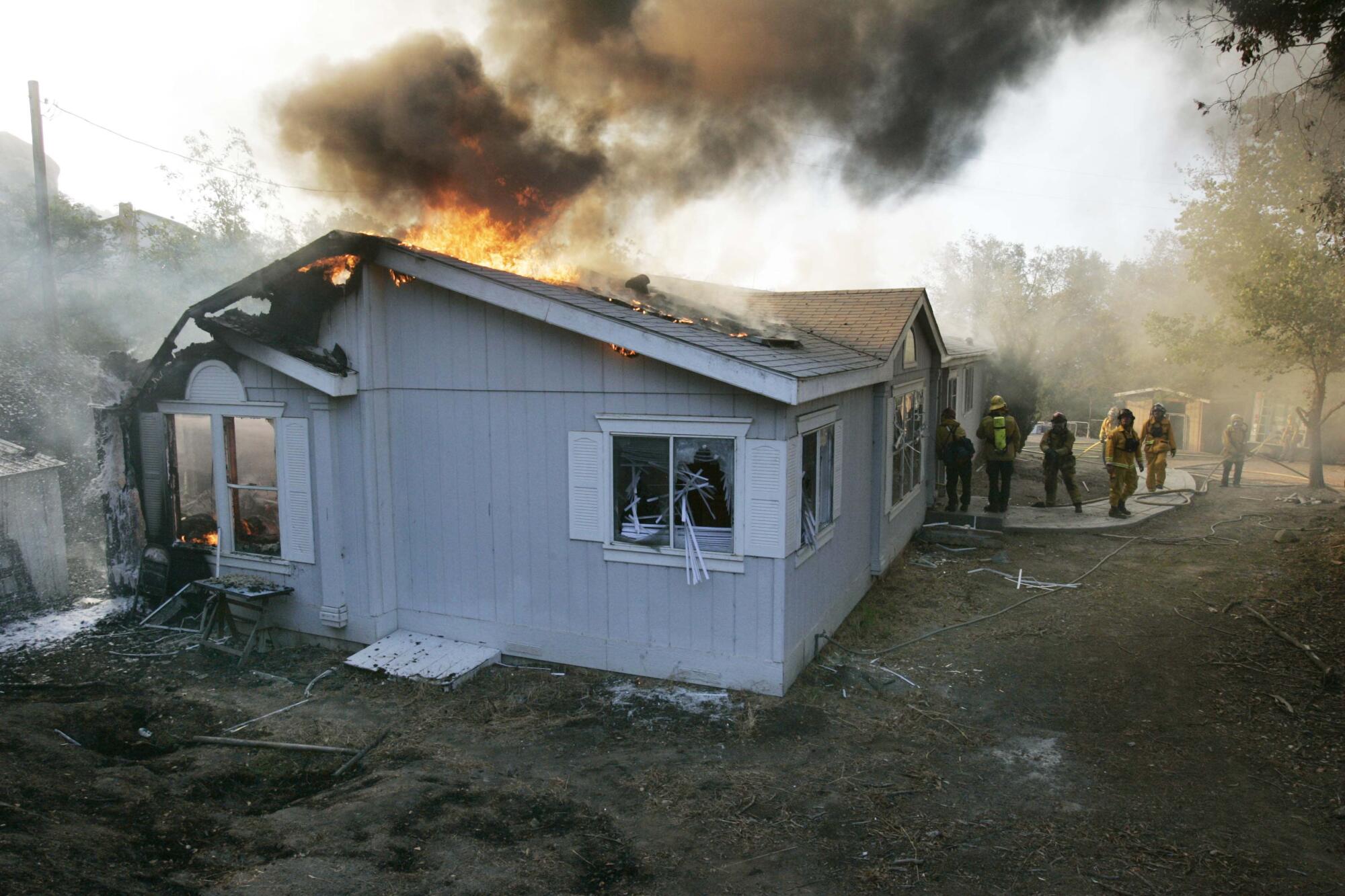
Perhaps surprisingly, it’s slightly less expensive to build a wildfire-resistant home, according to 2018 report by the research nonprofit Headwaters Economics. That’s largely because the cost of fire-resistant fiber-cement siding is cheaper than standard cedar-plank exteriors.
However, the equation becomes more complicated when talking about the value of retrofitting older homes. The report found that a full overhaul including roofing, vents, siding, doors and windows can cost upwards of $60,000.
That’s given Boomhower and other researchers pause about the best way to protect these older structures.
“I think there’s a lot of interesting questions about how much retrofitting is cost effective,” he said. “How can we get a really good bang for the buck?”
Alexandra Syphard, a highly regarded wildfire scientist based in San Diego, expressed similar concerns. She said it’s important that government officials triage projects based on their cost effectiveness.
For example, her research has shown that installing ember-resistant screen vents is often the single best thing one can do to project a home. After that, she recommends upgrading windows.
“Most homes are destroyed because of embers or radian heat causing spontaneous combustion,” Syphard said. “A single-pane window is likely to shatter in that heat.”
Cal Fire officials said they will be conducting individual home assessments to determine the most appropriate upgrades for each structure. Priority upgrades will start with vegetation management and proper vent screens.
More to Read
Sign up for Essential California
The most important California stories and recommendations in your inbox every morning.
You may occasionally receive promotional content from the Los Angeles Times.











